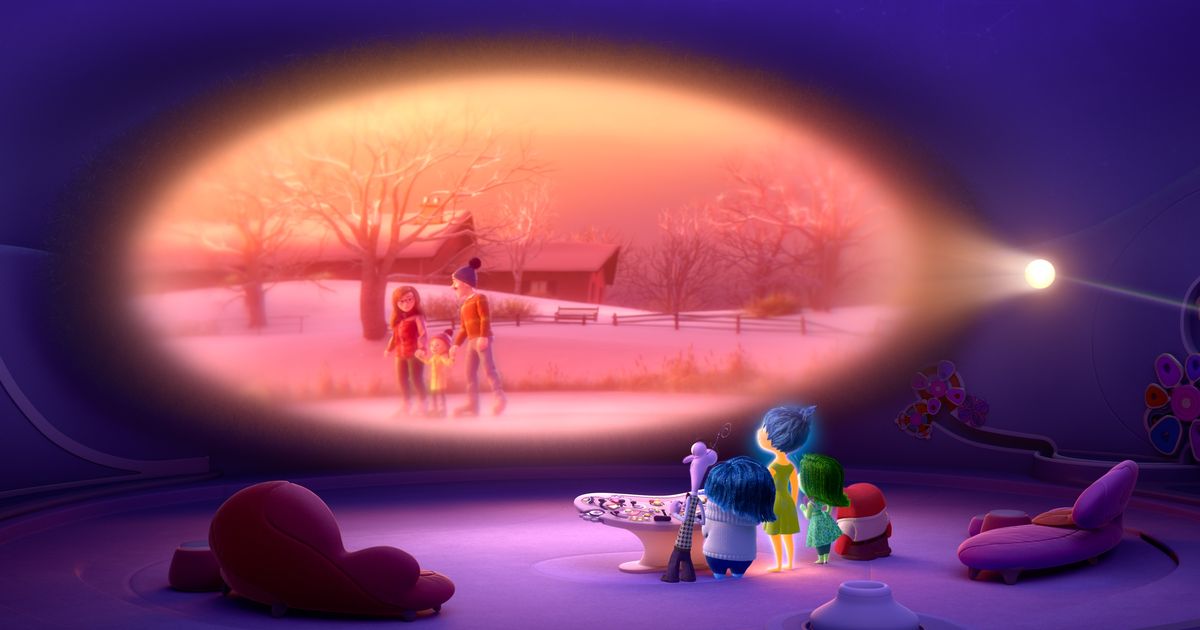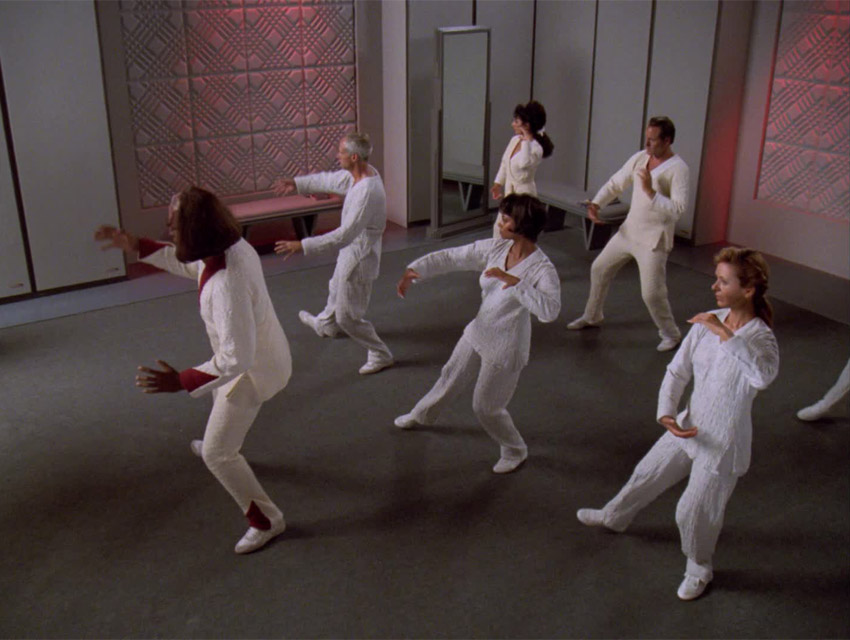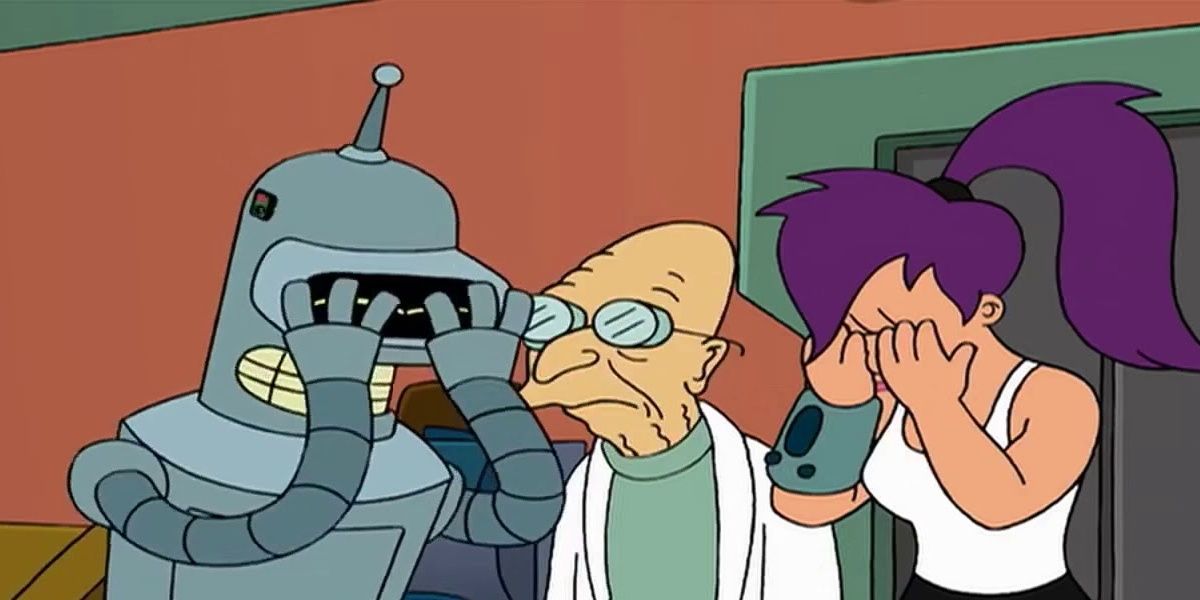This week we watched Marjorie Prime and the Star Trek: TNG episode “Measure of a Man”. What I thought was interesting about both of these texts was how similar yet different they are. They both deal with the creation of memories through the experiences has with different people. At the same time, they are both different because one deals with how a memory, no matter how fond or intimate, can be easily rewritten or even convoluted as you grow older and the other deals with our certain certain objects both define a memory and how that memory is associated to things.
As a Star Trek fan, this is one of my favorite episodes. I have a real soft spot for Data and how his sole purpose is to be human or to be as human as possible. The one scene I would like to focus on is the court room scene. Although this scene has alot to do with Data’s rights as both a sentient android and his rights as a Starfleet officer on board the Enterprise, Picard uses Data’s memories as a way to argue that Data is able to feel and self-aware of the deep feelings he and other people have. Picard brings a tote of various objects that Data has a very intimate connection to. During his cross-examination of Data, Picard pulls out two things that have a deep and intimate impact on Data. The first is a book that was gifted to him by PIcard. Data says that the book “is a reminder of friendship and service”. Picard then pulls out a hologram of the late Tasha Yar. Data is hesitant to talk about it as the hologram has a deep, emotional meaning to him. Data says: “She was special to me, sir. We were… intimate.” This object, if not both, is the reason why Picard and Data win the court case. In relation to the voice thread, the scene has a lot to do with extended cognition–part of the reason why we keep certain things with us in our life is because of what they make us remember. They help us remember people, places, and events and how they’ve shaped who we are.
officer on board the Enterprise, Picard uses Data’s memories as a way to argue that Data is able to feel and self-aware of the deep feelings he and other people have. Picard brings a tote of various objects that Data has a very intimate connection to. During his cross-examination of Data, Picard pulls out two things that have a deep and intimate impact on Data. The first is a book that was gifted to him by PIcard. Data says that the book “is a reminder of friendship and service”. Picard then pulls out a hologram of the late Tasha Yar. Data is hesitant to talk about it as the hologram has a deep, emotional meaning to him. Data says: “She was special to me, sir. We were… intimate.” This object, if not both, is the reason why Picard and Data win the court case. In relation to the voice thread, the scene has a lot to do with extended cognition–part of the reason why we keep certain things with us in our life is because of what they make us remember. They help us remember people, places, and events and how they’ve shaped who we are.

I loved the concept of Marjorie Prime. It reminded me a bit of Blade Runner 2049 and topic of human v. hologram in that. Unlike Blade Runner however, Marjorie Prime is easier to follow and explain in relation to the topic at hand. I think this movie is a good representation of how our memories change. I feel as if our memories change to bring us more comfort as we age especially when we start to lose our memories; we change certain things to make ourselves feel more safe and secure whether we realize it or not. Another reason is that we’re not just remembering the original event but our memory of the event as well–this is a good example of why eye-witness accounts are, most time, very unreliable.




 case is Riley’s memory of the aftermath of losing the big hockey game. She’s sitting
case is Riley’s memory of the aftermath of losing the big hockey game. She’s sitting  out or anything) is a technique similar to meditiation–it is used to both clear the mind and phsyical protection (Mok’bara is the basis of Klingon hand-to-hand combat). Aside from the fact that watching Worf teach a meditation class is seemingly hilarious and contrasts to his more serious Klingon maneurisms, Mok’bara works as a contrast to Alkar’s funeral meditation. Alkar’s funeral meditation highlights the fact that Alkar is an “energy vampire” of sorts. Where Worf meditation works to clear the mind and protect yourself, Alkar’s meditation is works to lower your defenses and allow him to inflict his negative emotions onto you. Being that Troi is an empath, this means that she is more vulnerble to attacks of this nature as well as being more effected by them.
out or anything) is a technique similar to meditiation–it is used to both clear the mind and phsyical protection (Mok’bara is the basis of Klingon hand-to-hand combat). Aside from the fact that watching Worf teach a meditation class is seemingly hilarious and contrasts to his more serious Klingon maneurisms, Mok’bara works as a contrast to Alkar’s funeral meditation. Alkar’s funeral meditation highlights the fact that Alkar is an “energy vampire” of sorts. Where Worf meditation works to clear the mind and protect yourself, Alkar’s meditation is works to lower your defenses and allow him to inflict his negative emotions onto you. Being that Troi is an empath, this means that she is more vulnerble to attacks of this nature as well as being more effected by them.
 Heptopods). This connection between Louise and the Heptopods reinforce the meaning of the scene, which starts at 01:01:50, where Ian discusses that “if you immerse yourself into a foreign language […] you can actually rewire your brain.” This is an example of the Sapir-Whorf Hypothesis, which is, Louise explains: “[…] is the theory that the language you speak determines how you think [and everything you see].” In other words, if we change our lamguage, we essentially alter the frames through which we conceptualize things. After this scene and throughout the rest of the movie, we learn that the visions she has been seeing of her with her daughter aren’t memories but are premonitions, so to speak. Through their telepathic link, the Heptapods use their conception of time (which to them is non-linear but simultaneous) to help Louise (who conceptualizes time as linear) understand and learn their langauge. In terms of the Sapir-Whorf Hypothesis, Louise learns their language and has her brain essentially rewired to conceive time how the Heptapods conceive it.
Heptopods). This connection between Louise and the Heptopods reinforce the meaning of the scene, which starts at 01:01:50, where Ian discusses that “if you immerse yourself into a foreign language […] you can actually rewire your brain.” This is an example of the Sapir-Whorf Hypothesis, which is, Louise explains: “[…] is the theory that the language you speak determines how you think [and everything you see].” In other words, if we change our lamguage, we essentially alter the frames through which we conceptualize things. After this scene and throughout the rest of the movie, we learn that the visions she has been seeing of her with her daughter aren’t memories but are premonitions, so to speak. Through their telepathic link, the Heptapods use their conception of time (which to them is non-linear but simultaneous) to help Louise (who conceptualizes time as linear) understand and learn their langauge. In terms of the Sapir-Whorf Hypothesis, Louise learns their language and has her brain essentially rewired to conceive time how the Heptapods conceive it.
 and Picard sit beside a campfire. In this moment, I feel that Picard’s brain has been rewired to understand the Tamarian captains language of metaphors. The Tamarians use stories from mythos to express what they are trying to say and so Picard uses a story to convey that he understands the Tamarian captain. In addition to this, the Tamarian langauge shows that the Tamarians are a unified species in a way. This is due to the fact that they speak collectively rather than just individually. The captains goal was to unite, not just himself with Picard, but the Tamarian species with the Federation.
and Picard sit beside a campfire. In this moment, I feel that Picard’s brain has been rewired to understand the Tamarian captains language of metaphors. The Tamarians use stories from mythos to express what they are trying to say and so Picard uses a story to convey that he understands the Tamarian captain. In addition to this, the Tamarian langauge shows that the Tamarians are a unified species in a way. This is due to the fact that they speak collectively rather than just individually. The captains goal was to unite, not just himself with Picard, but the Tamarian species with the Federation.
 laughing and smiling — as she turns the knob on the device the cord is connected to, her face turns to a sudden frown followed by a sob. This is juxtaposed to Bender “copying” Leela’s emotions as they both become angry at each other and then cry afterwards. I feel as if these scenes are an example of “Simulation Theory”. As the voice thread states: “Understanding others involves simulating their mental states based on your own experiences.”
laughing and smiling — as she turns the knob on the device the cord is connected to, her face turns to a sudden frown followed by a sob. This is juxtaposed to Bender “copying” Leela’s emotions as they both become angry at each other and then cry afterwards. I feel as if these scenes are an example of “Simulation Theory”. As the voice thread states: “Understanding others involves simulating their mental states based on your own experiences.”



